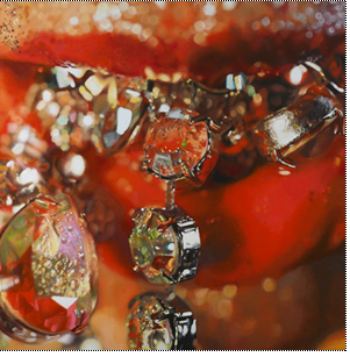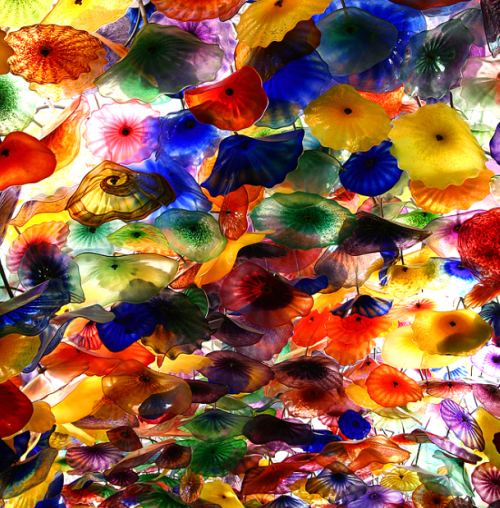Art is subtle, even when it’s crude, but context is crude, even when
it’s subtle. It’s a constructed narrative that places art in a
tradition.
Jasper
Johns:
Publicly a work becomes not just intention,
but the way it is used. If an artist makes something – or if you make
chewing gum and everybody ends up using it as glue, whoever made it is
given the responsibility of making glue, even if what he really intends
is chewing gum. You can’t control that kind of thing. (more)
Gum or glue: Given
that any number of elements can be used to define,
including but not limited to peer association, psychological projection,
philosophical inquiry and product similarity at a particular time and
place, those elements can give way to others, heretofore not
thought of, that could help artists emerge from whatever hole
they’ve been forced into.
The words that surround an artist’s practice are a
key, a code, a misdirection or a muffling device. What’s true of
criticism is true of the labels employed in criticism as well as marketing. What matters
most? Location, location, location.
I’m thinking of Ken
Johnson’s review
of the Outsider Art Fair in New York. Who is or isn’t an outsider is
hard to define, which means the category is wide open. An artist going
nowhere fast might get there faster should he or she be placed in the
outsider context. Getting there is not the point for outsider artists. Because they are never out of date, they need no destination. Because they don’t register in
the play of current aesthetics, they are better served in the outsider’s ever-present,
never-changing now.
For others, a less radical change in conceptual geography might do the trick.
Why can’t, for instance, Dale Chihuly‘s more madcap ventures
be grouped thematically with the exuberantly lustful? Critics are only as good as their sales pitch. Assume for a moment that a critic exists who could close this deal, who could slip Chihuly into a lineup with the likes
of Marilyn Minter and Ben
Weiner, just for starters. That critic could give glass art’s main man a way for a wider audience to think about him that is not what it thinks already.
Minter, Chewy (image via)
 Weiner – The Crimes of Paris (Pink Hair Gel), 2008, oil on canvas, 64 x 197 inches
Weiner – The Crimes of Paris (Pink Hair Gel), 2008, oil on canvas, 64 x 197 inches Chihuly, detail. (image via) If he had called the piece partially reproduced below a homage to pink hair gel or even an explosion in a shingle factory, would the change his narrative be enough to bump him onto a new track?
Chihuly, detail. (image via) If he had called the piece partially reproduced below a homage to pink hair gel or even an explosion in a shingle factory, would the change his narrative be enough to bump him onto a new track?




No.
Ok, I’ll take the bait: Yes, changing the narrative, or even the title could change the direction or even the meaning of the work. Is this always a good thing? Does this line of thinking follow into a mind/body, word/object split where the word has the final sway over the physically of the thing presented?
I love the lead line of this post and Johns’ point is important too. These objects are used for conjuring, though I am not willing accept the idea that art is completely subjective or that the fluctuating meanings of words do not have concrete meanings at any given time.
Jazzing up the title or the criticism seems like an odd way of breaking open the practice. Then of course, there is always Boogie Woogie…
Meaning has to mean something. You appear to suggest that art criticism is whatever critics can get away with.
Very interesting post.
Hello Husky. I love yr sentence, “These objects are used for conjuring.” I’m not saying that changing the title or the framework changes the work’s meaning, just its perceived meaning. Criticism is making a case. Not the case. A case.
Thank you. Ms. M.
And Ries. No? There is no “no”, and no “yes”.
You asked if changing the title of the work would change the narrative.
I do not believe that it would.
Hence, NO.
Chihuly, is, to misquote what they said about a body of water once, an inch wide, and an inch deep.
No amount of reconsidering, name changing, or reframing turns a potato into a novel.
Is that what critics do? Close deals?
Maybe you should curate, Regina. I would like to see this show. It could be called “visual excess”, and have no statements whatsoever, just visuals (so Chihuly wouldn’t be out of his depth). Who besides fellow artists and critics read the statements anyway? Most people make up their own meaning … and like Johns suggests are going to turn our work into glue whether we like it or not.
Carol. Yes, that is what critics do. They make the case, close the deal, bring home the bacon or better the living pig, alive in their sentences, muck and all.